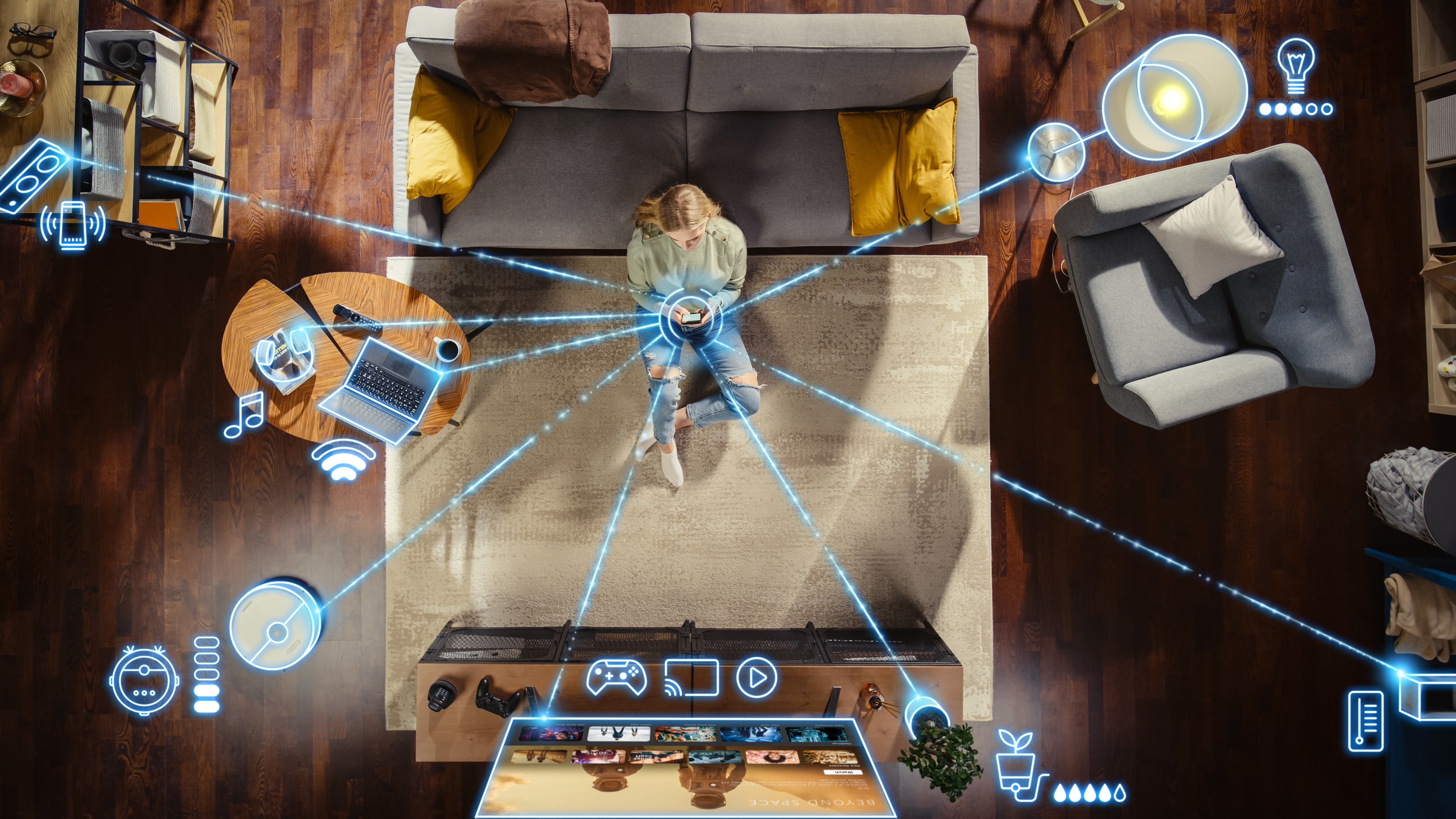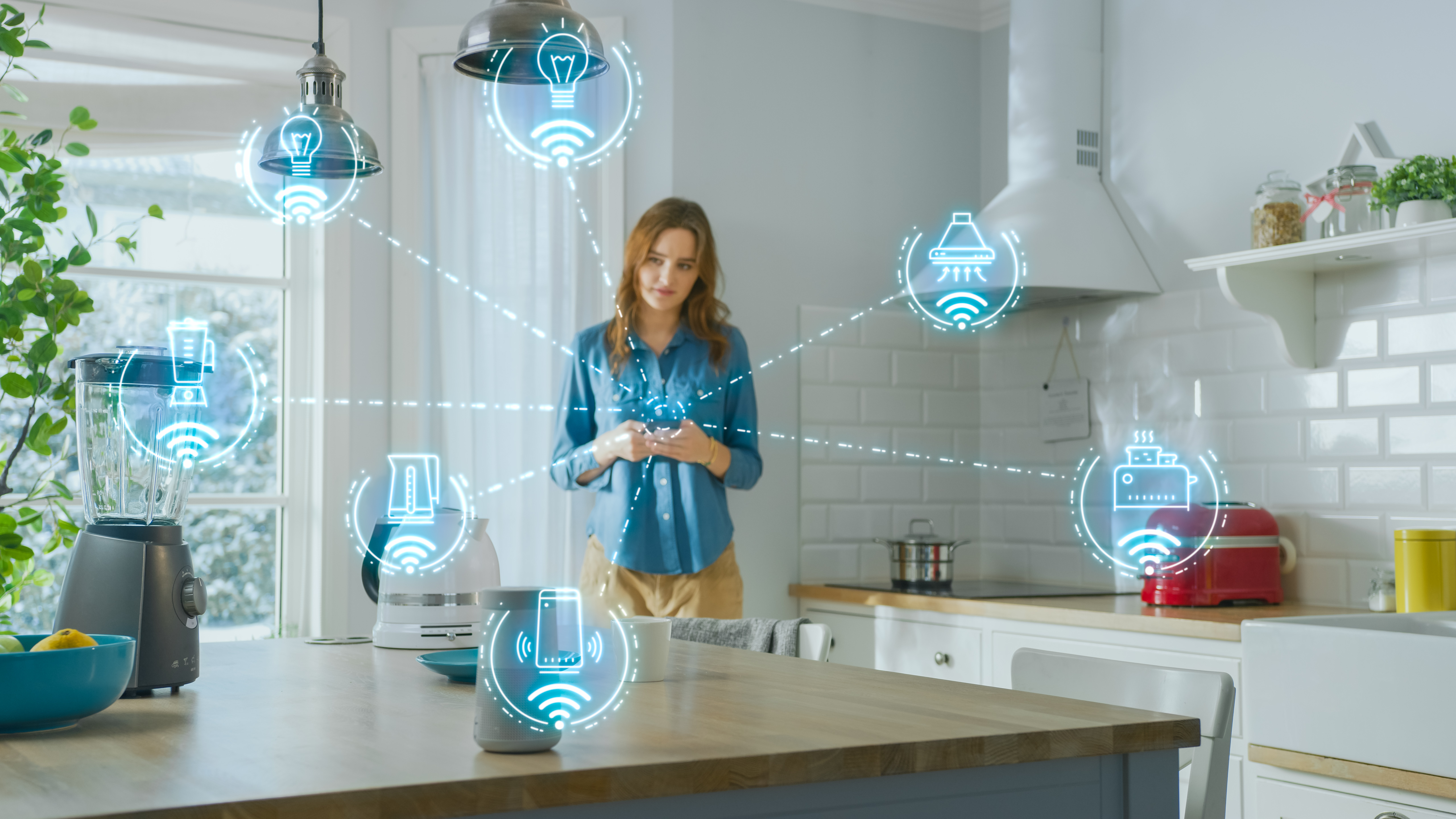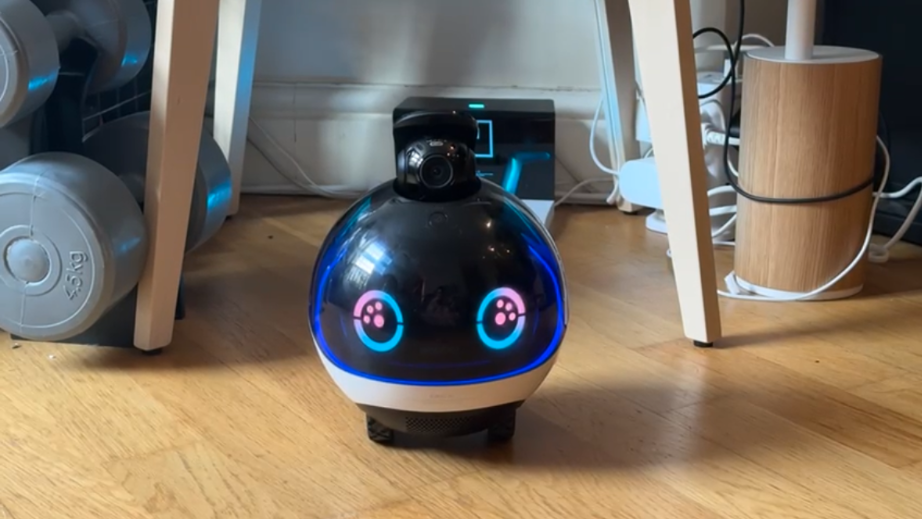How smart home is changing in 2024
We’ll likely see smart home improvements in AI, Matter and efficiency

Smart home is changing in 2024. If you don’t believe me, just think about how many devices in your home respond to or can be controlled by “Hey Alexa” or “Hey Siri.” And, then think about how many of those devices you had a year ago.
Smart home technology used to be mostly defined by having an assemblage of one of the best smart speakers, a few smart lights, and maybe a smart thermostat. Maybe some early adopters that went all-in had a few more things. Over the last year, however, we’ve seen the slow but steady progress of Matter, the rise of AI, and the continuous one upmanship of rival companies trying to make better, cheaper smart home devices than their competitors. We truly are on the edge of a revolution.
While it might not be as life changing as the first time our great-grandparents turned on a light bulb, the march towards an intelligent, autonomous and intuitively interactive home is quickly speeding up. And, 2024 may be a pivotal year as we’ll see more smart home products overall as well as ones with universal compatibility, AI built-in and a focus on better efficiency. Oh, and there’ll be robots.
The Matter standard might finally pick up
For those of us who saw the open source standard Matter hit the scene at the tail end of 2022, it looked like a game changer in the world of smart home tech. This protocol meant to break down barriers between different ecosystems would make it so you could buy Matter-certified smart devices that might “work with Alexa” and still use them in a different ecosystem. Though 500 companies collaborated on this new standard, it seems to not have made quite the wave it was expected to, at least to the general public.
While we cannot say that 2024 will categorically be the year of Matter, version 1.2 was just released in October adding compatibility support for nine new categories including robot vacuums, air purifiers, dishwashers, and refrigerators to name a handful. Add in the fact that as more new products get released, more of them will come with this standard so that pretty soon it will be as universal as we hoped.
For example, the first robot vacuum to support Matter, the SwitchBot K10 Plus, arrived in the last few months of 2023, and Panasonic just released a room air conditioner with the standard this December, though it currently only seems to be available in India. We’ll continue to see more products come with the Matter as time goes on.
The point is it might continue to be a trickle or turn into a deluge, but Matter will start to matter more in 2024.
Get daily insight, inspiration and deals in your inbox
Sign up for breaking news, reviews, opinion, top tech deals, and more.
The next smart home appliances to take off

Smart hubs and lights are already pretty well established, so while we’re sure to get more of them as Amazon rolls out new versions of the Echo, like the new Echo Show 8, we’re going to see much more growth in other areas.
We’ve already seen smart home air purifiers, dishwashers and more enter the scene this past year. LG, for instance, has a number of appliances that not only have ThinQ app support, but by extension, can connect that app to Alexa for hands-free control.
So 2024 may necessarily bring us anything new (with one possible exception I’ll discuss below). Instead, we will see wider adoption of various appliances with smart home capabilities in the kitchen, laundry room, and more.
In fact, while companies tend to be a little tight lipped before CES (taking place January 9th to the 12th this year), we’re speculating that there will be a boom in smart home appliances announced at the upcoming conference. For a little taste, just consider the Pawport pet door or Leafi’s Nova smart home blinds debuting there.
Efficiency, efficiency, efficiency
In truth, we’re mostly past the point of manufacturers releasing a smart home version of a “dumb” device for the first time in 2024. Just about everything this side of a backscratcher is available with an app now.
What we’re going to see more of is the holistic concept of the Internet of Things (IoT) being pushed in a way to create efficiencies in the home. Certain devices can already automate on a schedule, such as smart lights and some of the best smart thermostats. And, the ability to create routines across several smart devices in Apple HomeKit and Alexa has been around for awhile.
But, there are going to be a lot more. You’ll be able to schedule the smart home pet door and blinds mentioned above, for instance, so you’ll be able to create much deeper routines.
While I’ve seen some speculation on AI transforming these routines into a much more automated situation, no company has announced anything specific. Just vague mentions that your ecosystem should be able to respond in real time to you in your space like having a routine start at 4 pm instead of 5 because you got home an hour early.
Though LG has already announced a robot centered around its Zero Labor Home concept, the company has yet to explain what this vision is. All we know is the robot would autonomously roam around your home, managing the various smart home devices, such as turning off a smart light in an empty room.
However, we do already know AI implementation is coming for Alexa so you’ll be able to create full routines just through voice commands without ever having to pull up the Alexa app. And, as far as that AI goes, you may have noticed that your preferred voice assistant probably already sounds a bit more human, for better or worse.
The future is robotics

There is one area, however, that feels like we’ve finally entered the future. That’s the personal robot. Long gone are the days of dog-looking robots being kicked over by seemingly heartless scientists.
Though we’re not quite in the Roy Batty phase of cyborgs, personal companions that will patrol your home like the Enabot Ebo X are already available. And, as mentioned in the review for that particular robot, ChatGPT is on its way for more intuitive interaction.
Of course, there are two important factors that will affect how widely pet robots or robot companions get adopted. The first is price. The cost of that Enabot Ebo X, for example, is $999 / £999 GBP / AU$1,699. The second factor is how AI is implemented. The user experience with the Enabot Ebo X is a bit clunky from setting it up to interacting with it. Once a firmware update introduces ChatGPT or some kind of AI functionality to it, interacting with it will most probably be much more intuitive.
Without that AI, any robot is essentially going to be a device on wheels with just one or two competencies, whether it’s a security camera like the Ebo X or a vacuum like the Ecovacs DEEBOT T20 Omni, which not only has its own voice assistant (it works with Alexa as well) but will automatically return to its base station to clean out its mopping pads from time to time. Still, at the end of the day, it’s just an autonomous vacuum.
Once AI gets into the mix, these robot companions will start popping up all over the place. Considering how quickly artificial intelligence has progressed, it’s not hard to imagine 2024 being littered with many more robot releases with increasing intelligence.
While we’re not quite sure all that’s coming to robotics in 2024, we do know that the Amazon Astro, first announced three years ago, will be part of it as it just recently launched publicly as Astro for Business. It’s only a matter of time before it comes to the home.
It’s all about price
As smart home devices mature, we’ll see prices do what they do for all tech – come down. The newer, cutting edge stuff may not, such as robot companions, but being able to connect to a smart home ecosystem is not going to add a lot to the overall cost of contemporary smart home devices.
For example, you can already talk to the Amazon Fire TV Soundbar and that costs just under $120 (about £95). Or, you can now get a full panel of curtain lights from Govee for $129.99 / £159.99 (about AU$190). While that’s not dirt cheap, that’s pretty affordable for a set of string lights that can be adjusted on the fly using just your voice.
Just to throw out one more product. We reviewed the Cosori Pro III Dual Blaze back in June and were mostly impressed with its smart features as you can control and monitor it remotely. Plus, the app actually affords that smart home integration with Alexa and Google Assistant (though not in the UK for some reason), so you can not only get notifications but add time just using your voice. More importantly, it’s not much more than most decent air fryers, costing $149.99 / £179.99.
In essence, you’re not going to have to pay as much for smart home connectivity as before if only because the concept of the smart home and its associated devices has already had some time to marinate and mature.
Conclusion
2024 is going to be an exciting year for smart homes. Not because there are going to be a bunch of forward-thinking products we’ve never seen before, robots notwithstanding, but because we’re seeing the normalization of smart home devices in every corner of the home. Plus, with Matter continuing to be more widely adopted, it’s going to be easier to buy something that fits your needs without worrying about what ecosystem you have.
Artificial intelligence and a push towards efficiency is going to play a big part, especially since every brand wants to make the claim that “you’re going to save X amount” through automation and routines. You’ll probably be able to pay less for most devices as well.
2024 is going to be a good year for the world to embrace the smart home and for it to not just be the playground for early adopters. Or, at least, tell that to my dad and his one smart light bulb.
You might also like

James Holland loves checking out gadgets of all sorts, whether it's audio equipment, laptops, or vacuums (especially of the robot variety), and does so for a number of Future Publications including TechRadar, Top Ten Reviews, Homes & Gardens, and T3. He's built up an expertise for in-depth reviewing over the last four years. When he's not putting in the work on the latest tech, he loves to travel, play music, and eat questionable food.